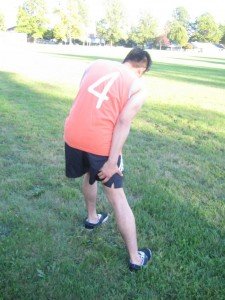Hemorrhoids are engorged vascular tissue in the lower part of the rectum and anus. In most cases, they do not cause any issues unless they become swollen. Once swollen, the hemorrhoids can trigger pain and itchiness around the anus that makes bowel movements uncomfortable.
What are the signs?
Thrombosed hemorrhoids can cause intense pain. If an individual has one, it can cause discomfort while sitting, walking or using the bathroom.
Other accompanying symptoms include:
- Bleeding during a bowel movement
- Itchiness around the anus

Thrombosed hemorrhoids can cause intense pain. If an individual has one, it can cause discomfort while sitting, walking or using the bathroom. - Swelling or lump around the anus
If fever is present with the swelling and pain, there is a possibility of having an area of infection known as an abscess.
Potential causes of thrombosed hemorrhoids
An individual can end up with hemorrhoids from the increased pressure on the veins in the rectum. The usual causes of this pressure generally include:
- Straining during bowel movements especially if constipated
- Variable pattern of bowel movements
- Diarrhea
- Being seated for extended periods of time such as long-distance travel by train, car or plane
- Pregnancy where the weight of the baby burdens the veins or from straining during labor
In some cases, the doctor could not determine why some individuals end up with blood clots within the hemorrhoids.
Management
The main approach in managing thrombosed hemorrhoids is a procedure known as external thrombectomy. This involves the creation of a small-sized incision in the clot to drain it. A local anesthesia is given to prevent any sensation of pain.
This procedure ideally works if performed within 3 days after the hemorrhoid appears. It works rapidly but the clots might recur. In most cases, pain or discomfort is expected after the surgery.

